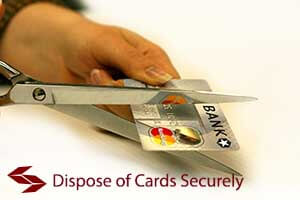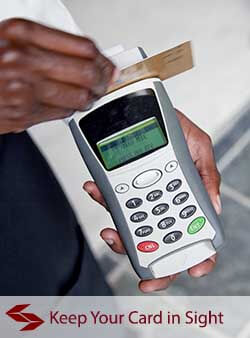 Despite increased security and card issuers continued vigilance in trying to prevent credit card fraud in the UK, the level of fraudulent activity remains very high and you need to be aware of the risks that potential fraudsters pose.
Despite increased security and card issuers continued vigilance in trying to prevent credit card fraud in the UK, the level of fraudulent activity remains very high and you need to be aware of the risks that potential fraudsters pose.
While on-line credit card fraud constitutes a large proportion of cases it is by no means the only way that fraudsters are engaged in trying to steal your money.
In the latest figures approximately 15% of detected fraudulent transactions were actually committed face to face with the legitimate cardholder.
What are the different types of credit card fraud?
Credit card fraud occurs in a number of different ways all of which present their own risks and require special attention by the cardholder to reduce the risks of being a victim.
Fraudulent use of stolen and lost cards
The fraudster will actually make direct purchases with the the lost or stolen credit card.
Card not Present fraud
A lost or stolen credit card will be used by a fraudster to make remote transactions such as paying over the telephone or over the internet.
Skimming
Skimming relates to the use of a credit card that has been cloned to make purchases either directly or remotely.
Phishing
We have probably all received fake emails requesting us to provide personal details, including credit card information by email. These emails are of course bogus and this process is known as phishing.
Pharming
This relates to the use of bogus internet sites that are holding themselves out to be another organisation such as a bank or on-line shop, colecting you credit card information for later use.
How can I reduce the risk of credit card fraud?
 There are a number of steps you should take to try and minimise the risk of your falling victim to credit card fraud.
There are a number of steps you should take to try and minimise the risk of your falling victim to credit card fraud.
- Treat you credit cards and debit cards like cash and protect them in the same way.
- Always sign your cards as soon as they arrive.
- Destroy all previous credit cards and debit cards by cutting them into small pieces and dispose of the pieces separately.
- Keep credit card bills and statements secure in your house. If you wish to dispose of them use a shredder, do not throw complete documents away they contain vital information that can help fraudsters build up a profile to help them with identity theft.
- Protect your electronic data on computers. phones and handheld devices. You should ensure that you have an appropriate level of security in place to protect your computer against attacks and infection by trojans and worms and that whenever you visit a secure site, such as your credit card provider or your bank make sure that you log off completely from the site when you are finished.
- Do not provide your card details over the phone to cold callers or to companies that you do not already know and trust. You should try to only provide your details during telephone calls that you have instigated.
- Do not let your card our of your sight when you are our shopping. If you are in a restaurant ask for the mobile terminal, if there isn’t one go to the main station to make sure that your card is always in sight.
- Always check the amount that has been entered onto a terminal before your authorise the payment.
- Exercise care at ATMs. Make sure you are not overlooked and look at the machine before you use it to see if there is anything unusual about it or evidence that it has been tampered with.
- If you notice any strange transactions on your account inform your card issuer immediately. It is sensible to keep the phone number that is shown on the back of the card in your mobile phone is the event that your card is stolen or lost.
